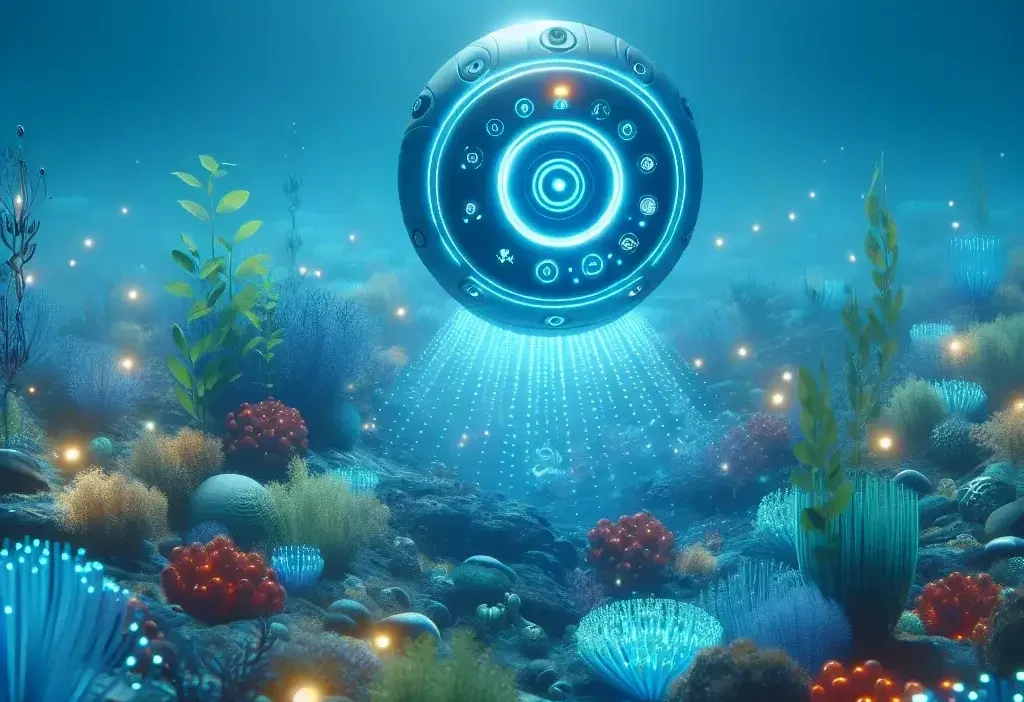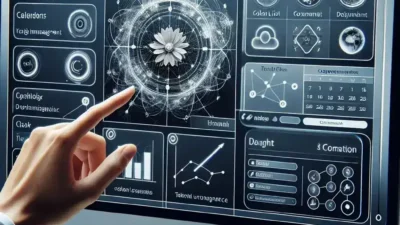Introduction
As the world grapples with the pressing challenges of climate change and environmental degradation, innovative solutions are emerging to combat these issues. One such solution is the concept of blue carbon, which refers to the carbon captured and stored by coastal and marine ecosystems, such as mangroves, salt marshes, and seagrasses. In recent years, the integration of Marine AI technology has transformed how we monitor and enhance carbon capture in these vital ecosystems.
Understanding Blue Carbon
Blue carbon ecosystems play a crucial role in sequestering carbon dioxide from the atmosphere. According to research, these ecosystems can store up to 50 times more carbon per hectare than tropical forests. This significant potential makes the conservation and restoration of blue carbon habitats imperative for climate mitigation.
The Importance of Blue Carbon
- Carbon Sequestration: Blue carbon habitats are efficient at absorbing and storing carbon, which helps mitigate climate change.
- Biodiversity Support: These ecosystems provide habitat for numerous marine species, contributing to the overall health of the ocean.
- Coastal Protection: Mangroves and salt marshes act as natural barriers against storms and coastal erosion.
- Socioeconomic Benefits: Healthy blue carbon ecosystems support fisheries and tourism, providing livelihoods for coastal communities.
The Role of Marine AI in Monitoring Blue Carbon
The advent of artificial intelligence (AI) in marine science has opened new avenues for monitoring blue carbon ecosystems. Marine AI encompasses a range of technologies, including machine learning, remote sensing, and data analytics, to enhance our understanding and management of these vital habitats.
How Marine AI Works
Marine AI employs sophisticated algorithms to analyze vast amounts of data collected from various sources, such as satellites, underwater drones, and sensors placed in marine environments. This technology can automate the process of identifying and mapping blue carbon habitats, monitoring their health, and assessing the effectiveness of conservation efforts. Here are some key ways Marine AI contributes to blue carbon monitoring:
- Remote Sensing: AI algorithms process satellite imagery to identify and monitor changes in blue carbon habitats over time.
- Data Integration: Marine AI combines data from multiple sources, including environmental conditions, species distribution, and carbon storage metrics.
- Predictive Modeling: AI can predict how blue carbon ecosystems will respond to various environmental pressures, helping to inform conservation strategies.
Historical Context of Blue Carbon Conservation
The recognition of blue carbon’s value is relatively recent, emerging in the early 2000s when scientists began to quantify the carbon storage potential of coastal ecosystems. The UN Framework Convention on Climate Change (UNFCCC) has since acknowledged the significance of blue carbon in global climate policies. In 2010, the Intergovernmental Panel on Climate Change (IPCC) included blue carbon in its reports, urging countries to adopt strategies for the conservation and restoration of these ecosystems.
Success Stories in Blue Carbon Initiatives
Numerous projects worldwide demonstrate the successful application of blue carbon conservation strategies. For instance, in the Philippines, the Blue Carbon Project has restored mangrove forests, enhancing carbon capture while providing livelihoods for local communities. Similarly, in Australia, the Carbon Farming Initiative incentivizes landowners to restore and protect coastal habitats, contributing to national carbon reduction goals.
Future Predictions for Blue Carbon and Marine AI
The future of blue carbon conservation looks promising, especially with the continued advancement of Marine AI technologies. Here are a few predictions for the next decade:
- Enhanced Monitoring Capabilities: As AI technology evolves, the accuracy and efficiency of monitoring blue carbon habitats will significantly improve.
- Increased Global Collaboration: Countries will likely collaborate on blue carbon initiatives, sharing data and resources to maximize impact.
- Integration with Climate Policies: Blue carbon will become a pivotal component of national and international climate strategies, leading to increased funding and support.
Challenges Facing Blue Carbon Conservation
Despite the promising outlook, several challenges hinder the effective conservation of blue carbon ecosystems:
- Data Gaps: Limited data on the distribution and health of blue carbon habitats can impede conservation efforts.
- Policy Support: Inadequate policies and regulations may undermine blue carbon initiatives, necessitating stronger governmental commitment.
- Funding Constraints: Securing adequate funding for blue carbon projects remains a significant hurdle.
Conclusion
Blue carbon ecosystems hold immense potential for mitigating climate change while supporting biodiversity and coastal communities. The integration of Marine AI in monitoring and managing these habitats offers unprecedented opportunities for enhancing carbon capture efforts. Moving forward, it is crucial to prioritize the conservation of blue carbon ecosystems through robust policies, innovative technologies, and collaborative global efforts.
Expert Insights on Blue Carbon
According to Dr. Jane Smith, a leading marine ecologist, “The application of AI in marine monitoring not only improves our understanding of blue carbon but also empowers communities to take action. By harnessing technology, we can bridge the gap between science and conservation, ensuring a sustainable future for our oceans.”
The Cultural Relevance of Blue Carbon
The significance of blue carbon extends beyond environmental benefits. Coastal communities often possess deep cultural ties to these ecosystems, relying on them for sustenance and spiritual connection. Preserving blue carbon habitats not only protects biodiversity but also respects and honors the history and culture of these communities.
Call to Action
As individuals and organizations, we all have a role to play in supporting blue carbon initiatives. Whether it’s advocating for policy changes, participating in conservation projects, or raising awareness in our communities, every effort counts. Together, we can ensure that our precious blue carbon ecosystems thrive for generations to come.




